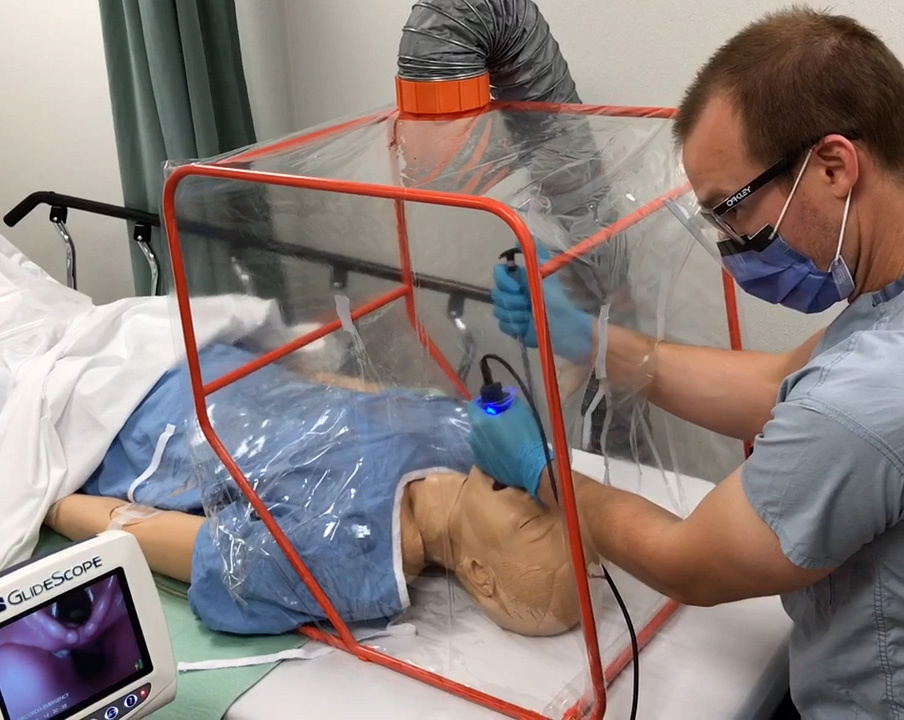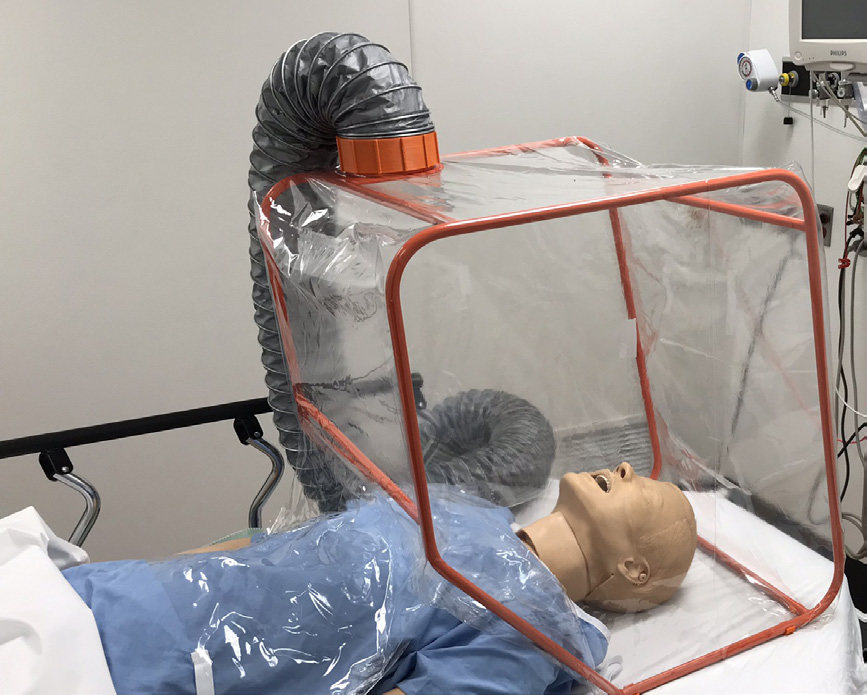Andau Medical
Aerosol Containment Tent™
Portable Negative Pressure
for Procedures
The ACT is the only portable negative pressure unit on the market that enables clinicians to perform procedures safely while the patient is contained under validated negative pressure. This enables containment of potentially infectious aerosols during Aerosol Generating Medical Procedures (AGMP). The ACT provides critical protection for clinicians conducting life-saving aerosol generating procedures on patients, such as Intubation/Extubation, High Flow O2, BiPAP, CPAP, BVM Ventilation and CPR.
BENEFITS
Increase safety during aerosol generating procedures
Intubation/Extubation, High Flow O2, BiPAP, CPAP, and BVM Ventilation
Increase negative pressure isolation capacity
Safely expand non-invasive ventilation usage to avoid ICU admissions
Enhanced flexibility in patient placement and temporary facilities
Minimize risk of COVID-19 transmission during elective procedures
Provide continuity of patient care by avoiding procedure delays and cancellations
PRODUCT SPECIFICATIONS
4 access ports for healthcare provider access
Minimum -7.5 Pa pressure differential, meets CSA standards
Over 2000 ACH, far exceeding CSA standards of 20 ACH
99.97% efficiency HEPA filter
Single-use disposal tent & duct
Reusable frame and fan/filter unit
Portable fan/filter on wheels
Fits standard hospital beds and/or tables
The whole COVID
ISSUE
Currently, clinicians are at risk for COVID-19 exposure when conducting these procedures; standard PPE and even N95 respirators alone may not be effective. Aerosols can travel up to 10 metres and be infectious for over 3 hours following an aerosol generating procedure*. This can expose clinicians and other patients in the environment to aerosolized viruses such as COVID-19. While negative pressure isolation rooms are recommended for performing these AGMPs the reality is that most hospitals only have 1 or 2 negative pressure rooms and they are often full or patients cannot be easily moved to these rooms for treatment. Many remote communities do not have negative pressure rooms for treating patients.
Staff isolation due to potential COVID-19 exposure is an emerging problem creating difficulty with hospital staffing and ballooning overtime budgets. Current estimates for delays of 6 common procedures in Canada due to COVID are an estimated $1.3 Billion, according to the Canadian Medical Association.
VIDEO: Dr. Marc Curial discusses why he invented the ACT.
The brilliant
Solution
By containing aerosols in a HEPA-filtered negative pressure unit, the ACT eliminates the aerosols that could lead to exposure and infection. Instead of moving a patient to a negative pressure room, the negative pressure can be moved to the patient so guidelines can be followed for performing AGMPs safely. The system also enables Operating Rooms to continue to function and provide critical services including potentially life-saving elective surgeries.
With over 2000 air exchanges per hour (ACH) and negative differential pressure ranging from 15 to 30+ Pa, the ACT far exceeds the minimum standards of 7.5 Pa and 20 ACH set out by the CSA for negative pressure.
Reduced staff exposure enables hospitals to maintain a high level of staffing capacity and decreases budgetary pressure associated with delays. Clinician safety can be achieved for aerosol generating procedures in all areas of the hospital such as ICU, OR, the Emergency Department and COVID units.
The ACT must become standard of care and included in hospital protocols for ALL aerosol generating procedures (AGMPs), such as intubations.
Designed and created by a Canadian team of innovators including an Emergency Room Physician and a team of Engineers, this device from MACH32 is regulated by Health Canada as a Class I Medical Device. The ACT is a Catalyst4Care Project.
References
The New England Journal of Medicine
Centers for Disease Control and Prevention
National Library of Medicine
References
BMJ – Classification of aerosol-generating procedures: a rapid systematic review
CBC News – “Which Surgeries Require Extra PPE? New review rounds up international guidance”
Would you like some more information about the ACT?


